Here's Looking at You, Kid: Volvo to Deploy In-car Cameras to Monitor Your Behavior
Volvo has burdened itself with the unrealistic duty of ending fatalities in its cars. While an admirable goal, eliminating roadway mishaps in their entirety is an exceptionally tall order. We’ve often wondered how the company intends to progress toward its zero-death target. The automaker has already said it intends to reduce speeding by limiting the top speed of all models to 112 mph.
On Wednesday, the company said it will introduce an orange “Care Key” that allows owners to apply whatever maximum velocity they desire (below 112 mph) and an in-car camera system designed to keep you from misbehaving behind the wheel. Volvo’s commitment to safety seems to exist without boundaries, but it leaves us wondering how far is too far.
Hyundai Raided in South Korea Over Theta II Engine Recall
In 2017, United States safety regulators opened a formal investigation into the recall of roughly 1.7 million vehicles built by Hyundai Motor Co and its affiliate, Kia Motor Corp, after being tipped off by a former employee. The informant claimed the automaker wasn’t handling the issue properly. That same year, South Korean civic group YMCA filed a complaint with local prosecutors alleging the automakers delayed fixing engine defects that prompted the same recalls.
According to Reuters, South Korean prosecutors raided the offices of Hyundai Motor Group’s quality division in Seoul on Wednesday. While the investigation concerns the company’s Theta II engines, both investigations seek to nail down a timeline of the recalls and establish whether or not Hyundai handled the situation responsibly.
40 Countries Agree - Automatic Braking Should Be Mandatory
Forty countries, led by Japan and the European Union, have agreed to require passenger cars and light commercial vehicles to come equipped with automated braking systems starting as soon as 2020.
According to the United Nations Economic Commission for Europe (UNECE), the new regulation will become compulsory for all countries that adopt it during an upcoming June session. However, the measure will only apply to vehicles operating at “low speeds,” which the U.N. claims is anything under 42 mph.
National Transportation Safety Board Makes Biennial Recommendations in 'Most Wanted List'
The National Transportation Safety Board (NTSB) has released its “Most Wanted List” of Transportation Safety Improvements it would like to see implemented by 2020, placing the obligatory emphasis on enhanced safety regulations. While it’s not surprising that a safety board would be a stickler on the public’s welfare, the NTSB is pushing for more safety nets in an era where cars are less dangerous than ever. That meant the agency’s recommended occupant protection measures dealt more with refining infrastructure and curtailing undesirable behaviors than modifying automobiles — but there was some of that as well.
According to the NTSB, automakers, motorists, and the National Highway Traffic Safety Administration (NHTSA) should be focusing on finding better solutions to curtail distracted driving, operating a vehicle under the influence, and speeding. Then, and only then, can we achieve the NTSB’s dream of death-proof driving.
AAA: There's Too Many Driver Assistance Tech Names
If you read this website regularly, browse automobiles online, or have taken a trip to the dealership within the last couple of years, you’ve probably noticed the countless names applied to driver assistance systems appearing in new cars. It’s the result of automakers wanting proprietary names for these features that they think sound catchy.
Not everyone is a fan. The American Automobile Association (AAA) doesn’t feel that “having twenty unique names for adaptive cruise control and nineteen different names for lane keeping assistance” helps consumers make informed decisions.
According to its own research, AAA claims that advanced driver assistance systems (ADAS) were available on 92.7 percent of new vehicles on sale in the United States as of May 2018. That makes them next to impossible for consumers to avoid. Thus, the motor club group feels it’s time for automakers to standardize their naming strategies — if for no other reason than to help preserve our sanity.
GM's Side Airbags Are Still Crashing the Party
In a perfect world, a vehicle’s airbags would only deploy in circumstances where the driver, in hindsight, applauds the life-saving buffer’s invention. Not included in that list of circumstances is a spinout, far removed from hard obstacles or other vehicles.
One Chevrolet Camaro ZL1 driver isn’t applauding General Motors after his car’s side curtain airbags made their presence known at 19 mph, free of any impacting object or rollover.
Valeo Previews 'Invisible' Trailer System at CES 2019
With so many bewildering and downright fantastical automotive concepts premiering at the Consumer Electronics Show this time of year, it’s easy to feel downtrodden by the industry’s mobility shenanigans. Thankfully, CES still plays host to some genuinely interesting tech that might actually make your life a little easier.
For French automotive supplier Valeo, that meant showcasing a system that utilizes cameras and some very careful framing to effectively see through a towed object. Called the XtraVue Trailer system, the technology works in a similar fashion as the nanotechnology invisibility blanket under development by the U.S. military — just much simpler.
Too Warm: Ford Recalls Nearly 900,000 F-150s Over Block Heater Fault
Harnessing the magic of electricity to keep your engine block toasty is a better option than crossing your fingers and saying a silent prayer before turning the key (or pressing the button) on cold mornings. Unfortunately for Ford F-150 owners living in northern climes, the block heater residing beneath their truck’s hood might pose a danger to their vehicle — and perhaps their house.
Hoping to remedy a fire risk, Ford Motor Company has issued a recall on roughly 874,000 late-model F-150s in North America.
The 57 Models That Received IIHS Safety Awards for 2019 (Spoiler: There Aren't Many Americans)
Despite perpetually raising the bar on what constitutes automotive safety, the Insurance Institute for Highway Safety just gilded nearly five dozen models with Top Safety Pick or Top Safety Pick Plus awards. The metrics, which now hinge largely on a vehicle possessing crash avoidance systems and superior headlamps, require the highest rating available in passenger-side protection during its small overlap front crash to get the coveted Plus decoration — which 30 vehicles qualified for in the initial 2019 model year evaluation.
Hyundai, which managed to walk away with the most awards, swiftly issued a press release to humblebrag that it bested the competition two years running. Considering how well the Koreans performed, it was likely warranted. Automakers absolutely love this kind of stuff, so you can expect to see future references made to the awards in the next batch of car commercials.
Headlights Still Largely Suck, Just Not As Much As Last Year
A collective groan must have echoed through the automotive industry a couple of years back, after the Insurance Institute for Highway Safety began testing headlight performance. Early results showed that most headlights, even those on expensive vehicles, fell well short of optimal performance. Most fell short of acceptable performance.
Since then, improvements have begun — slowly, but surely. It’s in an automaker’s best interest to slap a couple of bright peepers on the front of their vehicles from a PR and marketing perspective, but there’s cost issues to be considered. Still, no vehicle can take home that coveted Top Safety Pick+ rating without good headlights.
In its 2018 testing, some 32 models offered standard or available headlights worthy of a “good” rating. That’s out of 165 models.
Work in Progress: Waymo Van Stakeout Reveals the Challenges of Self-driving Tech
The self-driving Chrysler Pacifica vans operated by Alphabet-owned Waymo didn’t know they were under surveillance, but indeed they were. Reporters from the Arizona Republic were on their tail, watching as the autonomous vans — safety driver behind the wheel — tooled around the streets of the Phoenix, Arizona metro area for a period in October. In total, the rolling stakeout covered 170 miles of sun-drenched roadway.
Earlier this week, Waymo announced it had become the first company to offer a commercial ride-hailing service (“Waymo One”) using autonomous vehicles, even though there’s still a live human being behind the wheel. That employee’s job is to monitor the vehicle and take over if needed, as self-driving tech is still in its early days. There’s bugs to be worked out.
What the newspaper’s surveillance showed was that vehicles operating “by the book” — ie, with a strict adherence to the rules of the road and an abundance of caution — sometimes don’t mix well with humans. Go figure.
Michigan Testing Shows Fairly Innocuous Weather Baffles Self-driving Car Systems
Successfully operating self-driving cars on crowded, complex roadways in sunny, dry locales like Phoenix, Arizona is already enough of a challenge, but researchers in the cold, tempestuous climes of Michigan have revealed what the latest and greatest autonomous technology is really up against.
Rain, sometimes hard rain. But also light rain. Also: cold temperatures, and trees with leaves that fall off in the winter. Given that so few places in the world boast such extreme weather and vegetation anomalies as Michigan, this won’t pose a problem for the widespread proliferation of driverless cars, will it?
DOJ Possibly Investigating Hyundai/Kia Recall Activity
Prosecutors may be looking into a vehicle recall affecting certain Hyundai and Kia vehicles equipped with the company’s turbocharged 2.0-liter and naturally-aspirated 2.4 liter engines. It’s not an investigation to determine if a recall is needed; rather, it’s a look-see to find out if existing recalls were conducted correctly.
It remains to be seen in these early stages if any charges will be filed. If action is taken, however, the fines levied would likely cut deeply into the company’s balance sheet.
Hyundai-Kia Senate Hearing Called Off; Fire Concerns Remain
A hearing that was expected to bring together representatives of Hyundai and Kia and the Senate Commerce Committee, scheduled for November 14th, has been called off.
The committee hoped to gleam information and answers on reports of engine fires in certain Hyundai/Kia products — a long-burning issue, pardon the pun, that’s increasing ever greater attention, especially from public safety groups. Recent media reports made it look like representatives didn’t plan to attend.
2019 Ram 1500 Aces Crash Tests, Stymied by Headlights
You win some, you lose some. For Fiat Chrysler, the new Ram 1500 represents more of a win, both in terms of quality, drive experience, and especially crash ratings, which just rolled in from the Insurance Institute for Highway Safety.
The previous-generation 1500 lost marks in two areas: driver-side small-overlap front impacts (a weakness it shares with FCA’s rear-drive passenger cars) and roof strength. Both of these tests earned the 2018 1500 a “marginal” rating from the IIHS, sinking its overall score. FCA engineers clearly did their homework — the new truck aced all crash tests. Too bad about those peepers, though.
Ford's Police Interceptor Utility Off the Hook As Brake Investigation Wraps Up
While the National Highway Traffic Safety Administration’s probe into reports of exhaust gasses leaking into the cabin of certain Ford Explorers continues, the company doesn’t have to worry about the brakes on its law enforcement variants anymore.
After launching an investigation into front brake hose failures — at the request of the Sacramento Police Department — in 2015, the NHTSA returned the verdict this week. Nothing inherently wrong with those front stoppers, it said. It seems the Sacramento PD really, really pushes its vehicles in pursuit training.
Uber Eager to Restart Autonomous Testing, This Time With Two Safety Drivers
Are two safety drivers better than one when it comes to the testing of self-driving cars? Uber Technologies feels it is, declaring as much to Pennsylvania’s road regulator. The company has filed an application with the state’s department of transportation to resume testing of autonomous Volvos, eight months after a fatal collision with a pedestrian on a darkened Arizona highway.
Uber stopped all autonomous testing in the wake of the March 18th collision, with the Arizona program dismantled for good. In Pittsburgh, the company hopes to show it learned from the safety lapses revealed in the accident investigation. These Volvos now have two fail-safes on board. Is it enough to restore the public’s trust?
IIHS Recommends Putting Your Teen Behind the Wheel of the Largest Vehicle Possible
Assuming you’re the sort of parent who’s willing and able to buy your child their first vehicle, you’ve probably made safety your top priority. While you could purchase a new vehicle with all the latest self-preservation tech, teens have a habit of scratching up cars. If you buy them an old clunker, they’ll learn a valuable lesson about the importance of auto maintenance but won’t be as protected when they crash into something — which they’re statistically more likely to do.
The Insurance Institute for Highway Safety recently updated its list of recommended vehicles for teens, promoting the “bigger is better” mentality. It claims an older, larger used vehicle is often a safer choice when compared to a newer small vehicle that costs roughly the same. While the institute’s suggestion makes sense, it’s also one step removed from recommending putting teenagers in armored personnel carriers.
Why Are Fatal Hit-and-run Accidents At an All-time High?
Roadway fatalities have been on the decline relative to population since the 1970s. However, the safest year on record since car ownership became commonplace was actually 2014. Deaths spiked in the following two years, with a very modest decline in 2017. While some of the increase can be attributed to more people driving more miles than ever before, accounting for both elements still results in a higher overall rate of fatal incidents.
Hit-and-run statistics mimic this trend, with 2,046 pedestrian deaths reported in 2016. It’s not the total number that’s alarming — it’s the rate of increase, too. The AAA Foundation for Traffic Safety now claims hit-and-run fatalities are becoming a serious issue; reported incidents within the United States have seen a 60-percent increase since 2009. In fact, they’re the highest they’ve been since the NHTSA started keeping track in 1975.
Fragile Valve Springs Leads to Global Toyota-Subaru Recall
The defunct Scion brand isn’t done making headlines, it seems. The rear-drive FR-S 2+2 sport coupe is among a number of vehicles — mainly Subarus — recalled over valve springs that could break, leading to serious engine damage.
In total, some 400,000 vehicles built between 2012 and 2013 are included in the recall; among them, Subaru BRZs, Foresters, and Imprezas. The Japanese-market Toyota 86 and North American-market Scion FR-S, twins of the BRZ, feature the same 2.0-liter four-cylinder.
Toyota Hopes for New Trial After Judge Awards Crash Victims $208 Million
In the wake of a Dallas County judge’s decision to lower the amount of money awarded to a couple whose children were injured in a 2016 rear-end crash, Toyota Motor Corp. plans to continue fighting to clear its name.
A jury found the automaker at fault back in August, deciding that the seatbacks on the family’s 2002 Lexus ES300 were faulty and that the owners were not warned about the dangers. The family stood to receive $242 million in compensation. Due to monetary caps placed on punitive damages in the state of Texas, the final amount was pared back to $208 million.
Toyota isn’t letting the matter slide into the rear-view. The automaker continues to claim that the car’s seatbacks worked fine — the severity of the impact was to blame.
Automakers Ready to Rock When New NHTSA Headlight Rules Arrive
The National Highway Traffic Safety Administration announced earlier this month that it was willing to considering changing the rules that govern automobile headlights. Now in a comment period before its official review, the proposal would permit automakers to install and enable adaptive driving beam headlights on new cars sold in the United States. While some automakers are preparing themselves for the change, most have been ready for ages.
One one hand, this proposed change should help lousy drivers from burning out your retinas on a lonesome country road. But, by the same token, you may no longer have the delicious opportunity to blast them with the brights once they’re within a few feet of your car to let them know to lower those damned high beams.
Just kidding, that would be illegal. Federal mandates require all drivers to dim their headlights when approaching within 500 feet of an oncoming vehicle or when approaching a vehicle less than 300 feet ahead. Of course, nobody we know has ever witnessed this law being actively enforced — even though it’s probably as dangerous as moderate speeding infractions. Regardless, it’ll gradually become a non-issue if the rules change.
Global Survey Reveals Who We'd Prefer to Sacrifice on the Bumper of a Self-driving Car
In 2014, as publications and automakers began making greater noise about autonomous vehicles, researchers at MIT’s Media Lab issued some questions to the public. The institute’s Moral Machines experiment offered up a series of scenarios in which a self-driving car that has lost its brakes has to hit one of two targets, then asked the respondents which of the two targets they’d prefer to see the car hit.
Four years later, the results are in. If our future vehicles are to drive themselves, they’ll need to have moral choices programmed into their AI-controlled accident avoidance systems. And now we know exactly who the public would like to see fall under the wheels of these cars.
However, there’s a problem: agreement on who to sacrifice differs greatly from country to country.
AAA: New Safety Tech Effectively Doubles Cost of Minor Repairs
Advanced safety tech may save your skin, but it certainly won’t spare your wallet in the event of a minor accident. According to research from the American Automobile Association, replacing and/or recalibrating the sensors needed to allow modern driving aids to function properly are severely inflating the cost of even minor repairs.
Unfortunate, considering features like blind spot monitoring and automatic emergency braking are cropping up as standard equipment on even the most affordable rides. Car ownership continues to get more expensive and there doesn’t seem to be much we can do about it — with one exception.
Gas Up That Focus, Ford Says, As Automaker Launches Recall of 1.5 Million Cars
While Ford unceremoniously ended Focus production in the U.S. earlier this year, the model is trying its best to stay in the public eye. The automaker has announced a recall of nearly 1.5 million Focus vehicles in North America to prevent a stuck purge valve from vacuuming up the 2.0-liter engine’s performance.
As owners await notification, Ford implores them to head to their local gas station and fill’er up.
Ford Mustang Ads Pulled for Stimulating Impure Thoughts
While I certainly don’t question their dedication to preserving freedom, one wonders what the Allied soldiers crossing the Channel in 1944 would have thought about the United Kingdom of 2018.
Let’s just say that British law is somewhat strict — especially in minor, unlikely areas of life. Going by the select media reports that make their way stateside as online outrage food, it would seem that, according to British lawmakers, danger lurks everywhere in a land where people once treated nightly bombing raids as a mundane form of weather.
Thanks to this new culture of safety and tolerance, a culture where the police encourages people to report when they’ve been offended on Twitter, car commercials can be pulled from airwaves after generating the wrong kind of feelings in certain viewers.
How to Score All The Cashback Deals From Tire Rack
You already saw our feature on the tire sale at TireRack on Goodyear winter tires, but it’s looking like the online superstore has a bunch of ways to earn some solid cashback between now and the end of the month. Covering everything from winter and all terrain tires to more basic all-seasons, the deals include options from Michelin, Continental, Yokohama, Cooper, Dick Cepek, Firestone, Khumo, and Pirelli. Click through the links below for a closer look at the various promos out there and how to qualify.
ZF's New Camera System Focuses on an Oft-ignored Danger: the Driver
The rollout of semi-autonomous driver assist systems designed to turn long highway slogs into stress-free, breezy jaunts isn’t in any way perfected, but OEMs and suppliers are working on it. Depending on who builds what, lane-holding can be dodgy, automatic braking can be capricious, forward-facing cameras and radar can misidentify or ignore objects, and drivers can easily be put on too long a leash, encouraging misuse.
It’s the latter issue that automotive supplier ZF wants to solve with its new interior camera system.
Right of the Dial: FCC May Open Automotive Safety Radio Frequency for Telecom Use
The Federal Communications Commission has decided to review how the radio spectrum intended for wireless communications should be divided. While a seemingly normal part of its duties, the reassessment could open up a part of the spectrum that was previously reserved for automotive applications. The super-high 5.9 GHz frequency reserved for cars was deemed important because it would help enable low-power connectivity in remote and high-density areas, allowing for vehicles to more reliably transmit information between each other and the infrastructure. This was framed by the interested parties as essential for helping to develop safe, autonomous driving systems but it could likely also work to aid any data-based services they offer in the future.
Meanwhile, cable companies, the telecom industry, and internet service providers (ISPs) don’t think it’s fair that automakers are getting their own slice of bandwidth when they’re not even using it yet. Carmakers have been working on vehicle-to-vehicle (V2V), vehicle-to-infrastructure, and dedicated short-range communication (DSRC) for years without much in the way of consumer applications.
NHTSA Probes Ford Power Tailgates That Lower Themselves
In early August, Fiat Chrysler Automobiles recalled 1.1 million Ram pickups after owners reported losing their loads, the fault of a tailgate that wouldn’t stay latched. Ford now seems to have a similar problem, only in this instance the tailgates carefully lower themselves under electric power.
A ghost in the machine? More like an electrical issue that the National Highway Traffic Safety Administration wants to get to the bottom of. This week, the safety agency announced the launch of an investigation into consumer complaints related to the wonky gates, possibly heralding a recall of 2017 F-Series trucks.
Higher Risk: Study Claims States That Legalized Marijuana Have More Traffic Accidents
The Insurance Institute for Highway Safety and the Highway Loss Data Institute announced Thursday that auto crashes in states with legalized recreational marijuana have increased 6 percent. Both groups will be on hand at the Combating Alcohol-and Drug-Impaired Driving summit at IIHS’ Vehicle Research Center in Ruckersville, Virginia to present two studies on the issue. Perfect timing, considering Canada just became the second country to legalize the substance and support for decriminalization continues to grow in the United States.
Of course, things are rarely so simple. While the IIHS and HLDI remain confident in their research, the National Highway Traffic Safety Administration claimed marijuana use was unlikely to contribute to traffic mishaps in any meaningful way back in 2015. And that’s just for starters. There is so much conflicting information on this issue, it’ll make your head spin harder than the most savage bong rip of your life, bro.
The Message Isn't Getting Across - Drivers Still Think Too Highly of Gee-whiz Driver Assist Features
American safety advocates have long cautioned motorists and manufacturers that poor communication leads to unrealistic expectations of driver assist systems, thus putting lives in danger. The Europeans are waking up to this reality, too.
Despite an ever-growing list of standard tech in new cars, customer bewilderment hasn’t waned, a new study shows. You’d be alarmed (but perhaps not surprised) by the number of people who think self-driving cars are already on the market.
Freeway Spinouts and Injuries: Report on Uber-Google Lawsuit Shines Light on Self-driving Tech's Dangerous Early Days
If reading about young brainiacs with God complexes and too much money living in Silicon Valley makes you ill, best not read this while eating. For everyone else, you’re encouraged to take a peek at this report in The New Yorker.
It’s a Marianas Trench-deep dive into what occured in the years leading up to last year’s filing of an intellectual property theft lawsuit by Google’s Waymo autonomous vehicle unit against ride-hailing company (and rival self-driving vehicle developer) Uber. The alleged theft is intriguing, but the behind-the-scenes accounts of what went on at Google’s pre-Waymo self-driving car effort is the stuff of HBO and Netflix. There’s crashes and mayhem, egos, genius, and money, money, money.
Absolutely no sex, of course.
Brighter, More Effective Headlights Now a Step Closer
The National Highway Traffic Safety Administration might soon grant automakers a long sought-after wish. On Thursday, the agency put forward a proposal to allow adaptive driving beam headlamps on U.S. passenger vehicles.
ADB lights would solve two problems at once: insufficient roadway illumination, as well as headlight glare. Despite the existence of automatic high beams, automakers currently have to find a happy medium in the amount of low-beam light thrown ahead of the car to prevent blinding oncoming motorists. According to the Insurance Institute for Highway Safety, which recently added headlight performance to its ratings criteria, plenty of new cars fail to find the right balance.
Following a Week of Toyota Recalls, the C-HR Gets Its Turn
It’s only 700 vehicles from the 2019 model year, but the voluntary recall issued by Toyota today involves the possibility of the rear wheels falling off. That seems a little more concerning than having your Prius go into limp mode.
The issue with the C-HR lies in its rear axle hub bearing bolts, one or more of which may not have received a proper tightening at the factory. Should they come loose while on the road, the C-HR could end up a three-wheeler.
In the Hot Seat: Kia Niro Hybrid Recalled Over Fire Risk
Kia will be recalling 27,000 Niro hybrids sold within the United States due a potential defect in its wiring relay that could potentially send the rear seats up in smoke. According to filings with National Highway Traffic Safety Administration, Kia reported a few warranty claims involving burn or heat damage to the rear seats. There was also at least one customer complaint alleging that the rear seat actually caught fire.
Affected units are said to come from the 2017 and 2018 model years. The main relay located beneath the rear seats is believed to have poor connections between its contacts on some vehicles. This results in increased electrical resistance and heat. In a worst-case scenario, a fire is totally possible.
Hot Stuff: Ford GT Recalled for Fire Risk
It wouldn’t be a supercar without some risk of getting burnt. Those performance limits are far beyond the capabilities of most owners, after all.
This time, however, the threat of conflagration is real.
According to Ford, certain copies of the GT run the risk of dribbling hydraulic fluid from the lines feeding its adjustable rear spoiler. Since the car’s centrally-mounted exhaust tips are located in close proximity, this problem could set the whole works ablaze.
Deja Vu: Tesla Gets Into It With the NHTSA - Once Again - After Crash Test Boast
Following the release of crash test results in 2013, Tesla claimed the Model S earned more than five stars on the National Highway Traffic Safety Administration’s ranking scale. Nuh uh, said the NHTSA. There’s only five stars to hand out. No one gets more than that.
Fast-forward five years and the exact same thing is occurring, this time centered around the just-tested Model 3. That sedan, which still isn’t cheap, earned five stars in all NHTSA crash categories. Kudos to Tesla engineers. However, the NHTSA isn’t happy with Tesla’s weekend boast that suggested the Model 3 is the safest car ever tested by the federal agency.
NTSB Looking Into Limo Regulations in Wake of Deadly Crash
The deadliest U.S. transportation accident in the last decade occurred in upstate New York this weekend, but it didn’t involve a airliner, train, or bus. The vehicle in question was a modified 2001 Ford Excursion. All 18 occupants of the aging limo died after the vehicle failed to stop at an intersection, with two pedestrians struck and killed in the parking lot where the runaway vehicle ultimately came to rest.
In the vehicle was a group of young people, including many couples and relatives, who were headed to a birthday celebration. While limo operators are already subjected to federal oversight, the National Transportation Safety Board plans to probe existing regulations as part of its investigation.
America's Favorite Off-roader Recalled for On-road Danger
Hands Off: Cadillac's Super Cruise Beats Tesla's Autopilot in First Consumer Reports Ranking
Now that new car buyers have a decent selection of semi-autonomous driving systems to choose from, Consumer Reports felt it would be a good idea to put them to the test.
Expect to see much consternation expressed on Tesla forums. The rankings, which pitted Cadillac’s Super Cruise against Tesla’s groundbreaking Autopilot, Nissan’s ProPilot Assist, and Volvo’s Pilot Assist, shows GM’s luxury marque in the lead.
What propelled Cadillac’s system to the top of the heap? The same element that gave Tesla’s system a black eye two years ago: safety.
Good News: We Died Less Often on the Road Last Year
After alarming increases in U.S. traffic fatalities in 2015 and 2016, data just released by the National Highway Traffic Safety Administration shows a decrease in the number of people who died in car crashes in 2017. A decrease, for sure, but still a shocking number: 37,133, or about one-third the population of West Palm Beach, Florida.
The same is true for Billings, Montana, as well as North Charleston, South Carolina and Manchester, New Hampshire.
The 1.8 percent drop in road deaths comes on the heels of a 6.5 percent increase in 2016 and an 8.4 percent spike in 2015. Have we suddenly become safer drivers? It seems so.
Scary Stats: Drivers Don't Know Jack About the Tech In Their Car
Over the weekend, I found myself conversing with a young woman who admitted to being slightly creeped out by modern automotive technology. She had a bone to pick with everything from push-button ignitions to adaptive cruise control. It was surprising admission from an individual who is planted squarely in the middle of the Millennial age bracket and has no serious interest in cars, but one I’ve been hearing more often lately.
The American Automobile Association seems to be rather touchy on the issue, as well. Much of its interest in the subject revolves around present-day tech lending itself to distracted driving, something it is firmly against. But the AAA Foundation for Traffic Safety appears absolutely convinced that the introduction of advanced driver assistance systems will save lives. However, it also believes that its full potential won’t be unlocked until consumers accept these technologies, understand how to use them, use them as intended, and avoid misusing or becoming over-reliant on them.
Frankly, that sounds like wishful thinking. So long as advanced driving aids exist, they’ll probably be misunderstood and misused. People don’t even use their turn signals correctly, for Christ’s sake.
Video: Tesla Model 3 Pulled Over For Having a 'Computer' Attached to the Dash
Saying the Tesla Model 3’s interior is polarizing would be a massive understatement. While some absolutely love the minimalist design and singular, tablet-like interface, others criticize it for being too barren to be considered interesting. The vehicle also saw some blowback over its centrally mounted 15-inch display, which, for several reasons, can serve as a potential distraction to drivers.
In fact, it’s so big that one Washington resident found himself pulled over by a motorcycle cop for having what was presumed to be a computer attached to his dashboard.
Let's Applaud These Affordable Cars for Their Tesla Model 3-like Crash Safety
Sorry, was that too snarky? Our headline alludes to the National Highway Traffic Safety Administration’s recent awarding of five stars in all crash test categories to the Tesla Model 3 — a bit of news that’s made the rounds lately. It’s a worthy achievement, so hats off to Tesla for building a car that can take a beating.
However, if you’re still waiting patiently for Tesla to deliver your car, here’s a listing of vehicles costing less than the current “base” Model 3 (the $44,000 Long Range model) that are just as safe in a collision, and are available to buy at a dealership near you. Like, even today.
With Criminal Case Dismissed, General Motors' Ignition Switch Fiasco Nears An End
Four years after launching a massive, incredibly delayed recall aimed at preventing further deaths from its faulty ignition switches, General Motors freed itself from a criminal case launched in the scandal’s wake.
Earlier this week, federal prosecutors in New York wrote U.S. District Judge Alison Nathan, compelling him to dismiss the case. Nathan approved the request, lifting GM free of the caudron. The rationale for dismissing the two criminal charges — concealing evidence from federal officials and wire fraud — comes down to good behavior on GM’s part, something that certainly doesn’t describe its past actions.
Don't Bother With the Garage Tonight: Nissan Recalls Over 215,000 Vehicles in U.S. Over Fire Concern
Nissan North America is recalling 215,124 vehicles in the United States and another 19,761 units in Canada due to an anti-lock brake pump defect that could pose a fire hazard. Affected models include the 2015-2017 Nissan Murano, 2016-2017 Nissan Maxima, 2017-2018 Nissan Pathfinder and 2017 Infiniti QX60.
The National Highway Traffic Safety Administration’s report on the recall says a seal on the ABS actuator pump may leak brake fluid onto the control electronic circuit board, resulting in a malfunction. In such an instance, the ABS warning lamp should come on to warn the driver. If this notification goes unheeded, the fluid leak could eventually cause “an electrical short in the actuator circuit, which in rare instances, may lead to a fire.”
Toyota's Self-driving Car Plan Still Incorporates the Driver, Calls Bullshit on Level 5 Autonomy
Despite being one of the largest manufacturing giants currently in existence, Toyota is trailing in the autonomous technology war currently raging among carmakers. But it would unfair to say that the Japanese brand is losing. While General Motors appears to lead the rest of the established automotive firms, it’s not perfectly clear how big a gap it made for itself. Meanwhile, Toyota spent the last few years taking a more cautious approach, without ever ignoring the possibility of an autonomous future.
In 2015, the automaker decided to get serious, saying it would invest billions of dollars into the Toyota Research Institute. The goal? To advance robotics and artificial intelligence to a level where it could test an autonomous vehicle by 2020. But Toyota remains skeptical of the rest of the industry’s progress on self-driving cars.
“I need to make it perfectly clear, it’s a wonderful, wonderful goal,” Gill Pratt, the CEO of the Toyota Research Institute said at CES 2017. “But none of us in the automobile or IT industries are close to achieving true Level 5 autonomy, we are not even close.”
Safety Advocates Getting Testy Over Automotive Apps, Consumer Data
Automakers began hunting for new revenue streams about two milliseconds after realizing they could put the internet into vehicles. While the earliest endeavors involved ride-sharing applications and new infotainment features, companies are now beginning to see new opportunities via automotive e-commerce, data acquisition, and in-car marketing.
However, the delivery system used for these new sources of revenue pose a legitimate safety concern. Distracted driving is on the rise and shopping while behind the wheel isn’t likely to remedy the situation.
Nearly Three-quarters of Tech-savvy Ford Owners Don't Trust Their Kids
Once upon a time, a kid who’d been handed the keys to the family car only stopped accelerating when a stop sign or red light approached, the vehicle ran out of gas, a speed trap appeared in the distance, or they hit the governor.
Today, technology allows parents to pry into their kids’ lives like never before. Moms and dads can harass their offspring remotely with phone calls and text messages, keep tabs on their behavior via social media posts, and even follow their minute-by-minute travels via phone tracker apps. Childhood is dead and parents are the new KGB. With its MyKey system, Ford seized on the modern parent’s growing paranoia and offered these human helicopters the opportunity to lock their crossover into “sedate” mode before tossing junior the keys. Well, fob.
But how many people actually use the feature? As it turns out, plenty. But to use it, they first need to know it exists.
Tesla's Latest Update Killed Some Vehicles' Autopilot
Tesla’s latest over-the-air update appears to have caused at least a few drivers to lose all Autopilot functionality. While the vehicles seem otherwise intact, the semi-autonomous driving mode that was supposed to be improved by the latest firmware installation ended up a little buggy. That’s unfortunate for Tesla — a company that could do without additional bad publicity.
Luckily, minor software issues are exactly that — minor. This isn’t on the same scale as Tesla’s CEO promising to go public or pretending to smoke weed online. It isn’t even as big of a deal as the company losing another high-ranking executive, which also happened this week.
Ford Employee Found Dead in Axle Plant Bathroom
A 24-year-old male employee was found dead overnight at Ford’s Sterling Axle Plant in Sterling Heights, Michigan, according to police reports. The man was discovered in a restroom stall shortly after midnight on Thursday morning. While no cause of death has been determined, the body has been transported to the medical examiners office for further investigation.
Sterling Heights police said the individual had told co-workers he wasn’t feeling well shortly before entering the bathroom. This is the second notable death at a Ford facility since December, when 41-year-old Ivan Bridgewater of Seymour, Indiana was killed at the Kentucky Truck Plant from blunt-force trauma. That incident was later ruled accidental. At the time, Ford was fined $37,000 by the Occupational Safety and Health Administration for violations of established workplace safety rules. The automaker contested the fine.
GM Recalls a Million Pickups and SUVs Amid Flurry of Accident Reports
More than a million, actually. A recall of 1,015,918 Silverado and Sierra pickups, plus their full-size SUV cousins, was issued yesterday by folks at the National Highway Traffic Safety Administration.
This recall affects machines from the 2015 model year. They are being summoned to repair centers thanks to electrical and software issues that could play havoc with the power steering system.
Digital Side Mirrors Become a Production Reality, but You Can't Get Your Hands on One Just Yet
I’ll admit it — my brow furrowed after first glimpsing the digital side mirrors adorning the Japanese-market 2019 Lexus ES. Strange, foreign, and unnecessary, the automaker’s new “Digital Outer Mirrors” seem like an answer to a question no one asked, but obviously someone did.
My next thought was how this would meld well with automakers’ infuriating tendency to outfit their concept vehicles with narrow, useless blades jutting from the leading edge of the side glass. Thinking it over, I realized Toyota’s little mirror-scrapping experiment has too many upsides to ignore.
Let It Bleed: General Motors Recall Targets ZF Brakes
General Motors has recalled over 210,000 late-model sedans and crossovers in the U.S. and over 19,000 north of the border after discovering the potential for a braking issue. The automaker blames the issue on rear brake calipers supplied by ZF, which can also be found on vehicles built by Volkswagen, BMW, and Audi.
It all comes down to trapped hydrogen gas in the body of the brake piston, which, when released into the brake fluid, makes for a mushy left pedal and reduced rear brake performance.
Isn't It Ironic: Chevrolet Launches Engaging Phone App Intended to Curb Distracted Driving
Chevrolet is releasing a new smartphone app, titled Call Me Out, to help remind motorists to keep their eyes on the road and put their phones in their pockets while driving. Of course, individuals will still have to check their phones to receive the messages, which seems a little counterintuitive.
While the automaker appears to target “new and experienced drivers,” there’s nothing to indicate the product wouldn’t work equally well for experienced operators. Call Me Out basically functions as a guilt delivery system, using a person’s family and friends for ammunition. Once the app has been installed, the phone’s accelerometer and GPS wait until the car surpasses 5 mph. Then the phone plays recorded, personalized messages from the driver’s loved ones, reminding drivers to keep driving and avoid distractions.
For What It's Worth, a Kia K900 Front Corner Collision Will Cost You Dearly
There’s a good reason why insurance premiums are rising like your author’s blood pressure while scanning his Twitter feed, and it’s not just because providers really, really like making money. (They do, of course.) Average repair bills in the U.S. rose by about a third in the past three years, mainly due to the proliferation of safety technology, and insurance premiums followed. Country-wide, premiums rose 7.9 percent in 2017.
Cameras, ultrasonic sensors, and radar sensors tend to be located in areas of the vehicle most prone to damage, even in even low-speed collisions, and sturdy, exposed 5 mph bumpers are unfortunately a thing of the past. Many would prefer to see all automakers design their cars with repairs in mind, thus lowering future costs and premiums.
As an example of the headache of repairing technology-festooned vehicles, behold the average front-corner collision repair cost of one rare Korean sedan.
Seatbelt-related Fires Spark Recall of Two Million Ford F-150s
As far as safety recalls go, this one’s pretty sizeable, and it impacts a company that’s seen a lot of money lost on safety recalls in recent years. Ford Motor Company has announced the recall of nearly two million examples of the world’s best-selling vehicle to prevent the seemingly unlikely occurrence of seatbelt-related blazes.
The recall, affecting 1,995,776 trucks in North America — 1,619,112 of them in the United States, is the result of 17 documented fires or reports of smoke in 2015-2018 model year F-150 regular cabs or SuperCrew models sold stateside. Another six incidents took place in Canada.
The fires originated inside the vehicles’ B-pillar, with the seatbelt pretensioner as the source of the issue. While the life-saving device works properly to restrain the front-seat driver and passenger in the event of a crash, it’s what occurs after the device’s deployment that has Ford worried.
Toyota Recalls One Million Prius and C-HR Hybrids Over Fire Risk
Toyota is recalling over one million Prius and C-HR crossovers due to engine wires that pose a potential fire risk. Involved in the call-back are roughly 192,000 vehicles in the United States, according to estimates made by the automaker on Wednesday. However, the vast majority of the 554,000 affected vehicles reside in Japan.
While no injuries have been reported, an alleged incident occurred in February 2018 where a wire harness connected to the vehicle’s hybrid power control unit shorted out.
Silent Running: Ford Sought Exception on Federal Noise Requirements for Hybrid Cars, EVs
One of the benefits touted by early electric car advocates was a reduction in noise pollution stemming from automobiles. Electric motors have the potential to run far quieter than their internal combustion rivals, which could result in softer-sounding roadways.
The U.S. Department of Transportation started seriously worrying about the safety implications of silent-running vehicles back in 2010. Still, it wasn’t until this year that it legally imposed artificial noises on EVs as a way to warn inattentive or impaired pedestrians. Starting in 2020, vehicles with a GVWR of less than 10,000 pounds must emit a pedestrian-warning noise at speeds below 18.6 miles per hour.
However, despite a lengthy dialogue between government and industry, Ford was apparently seeking an exception for the federally mandated noise maker.









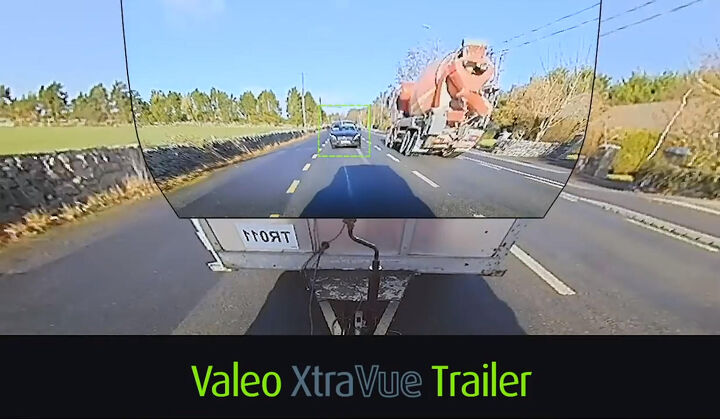








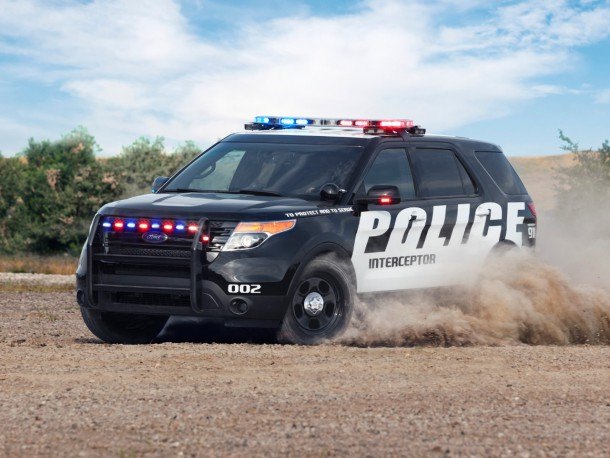















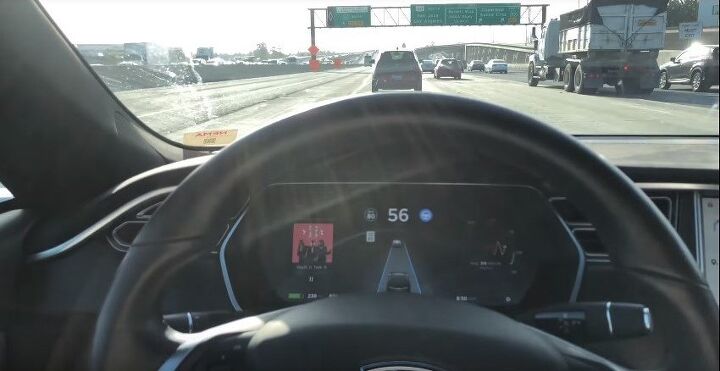



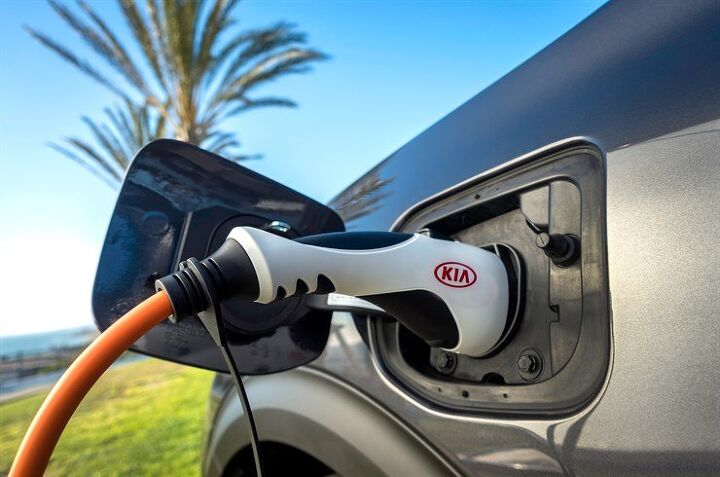

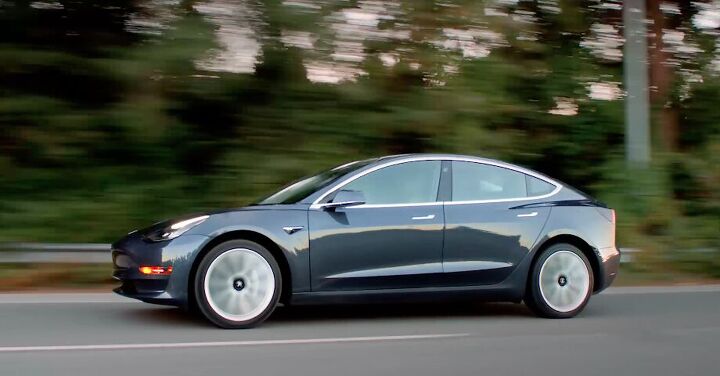


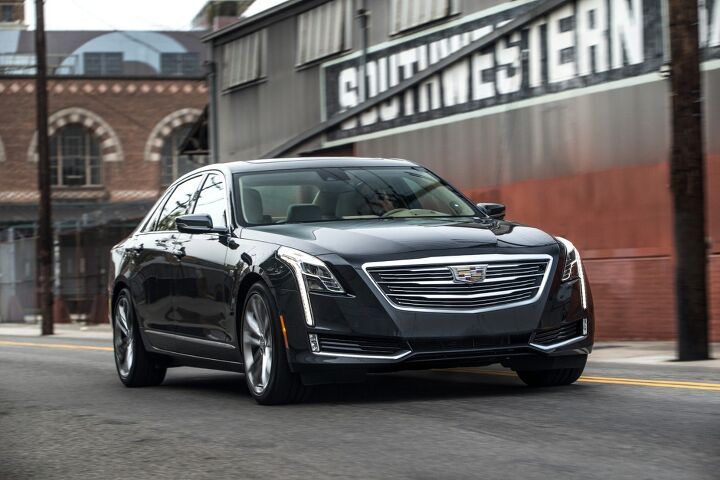

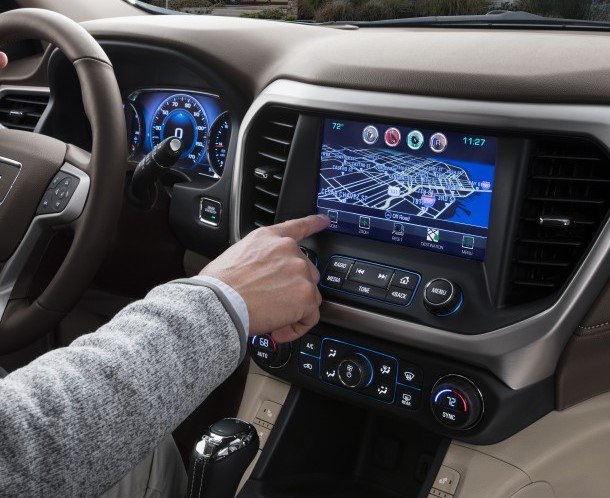
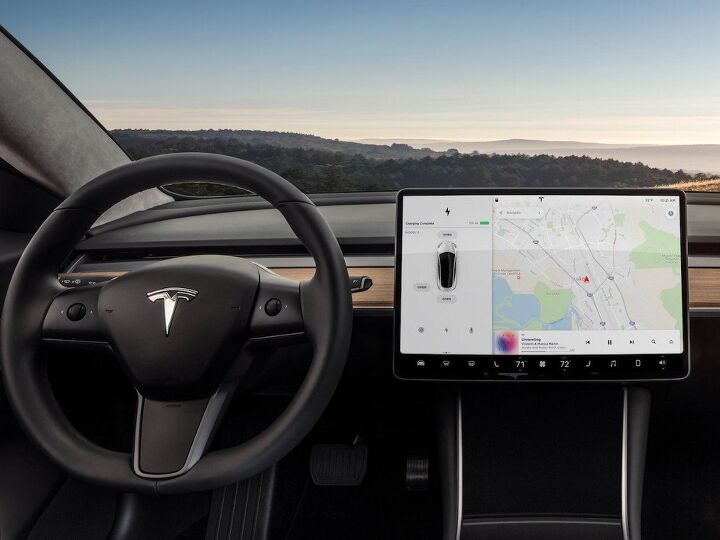
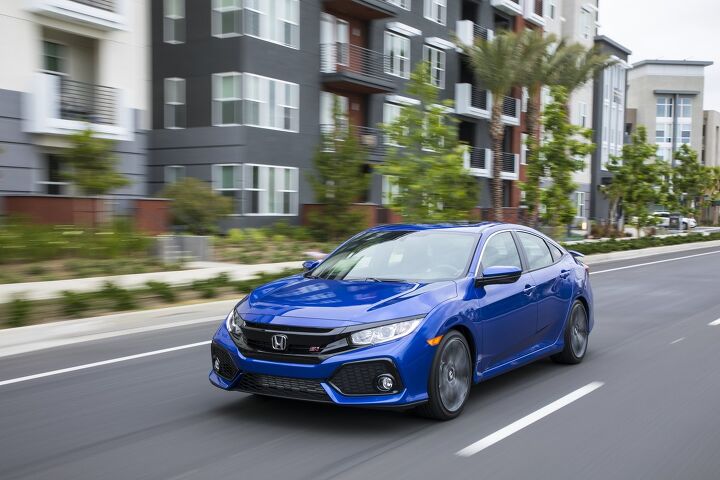

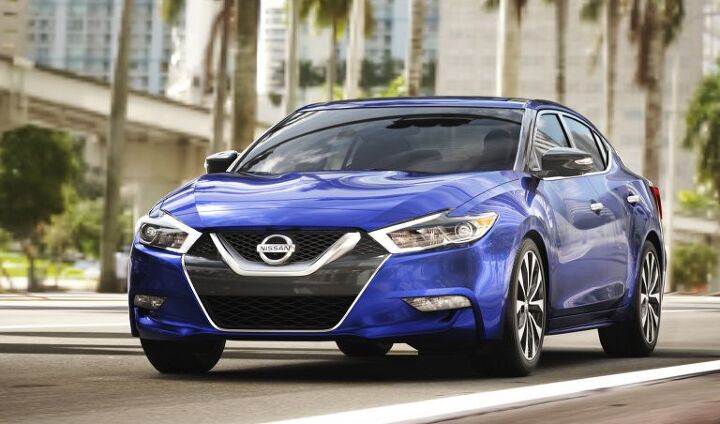





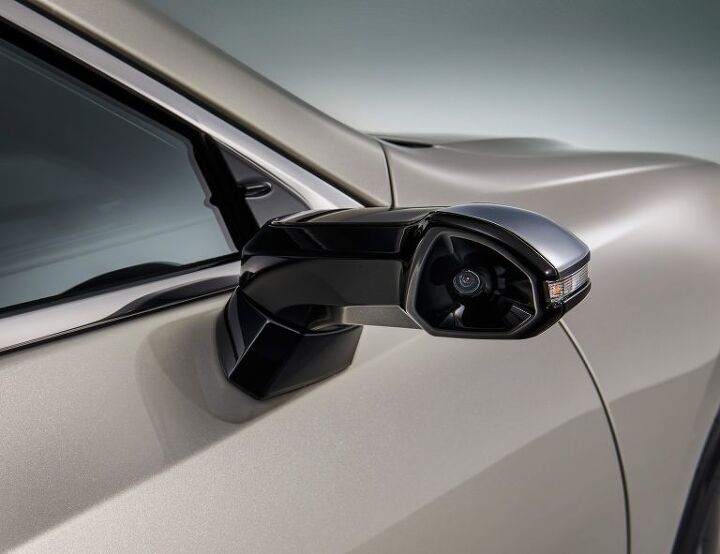


















Recent Comments